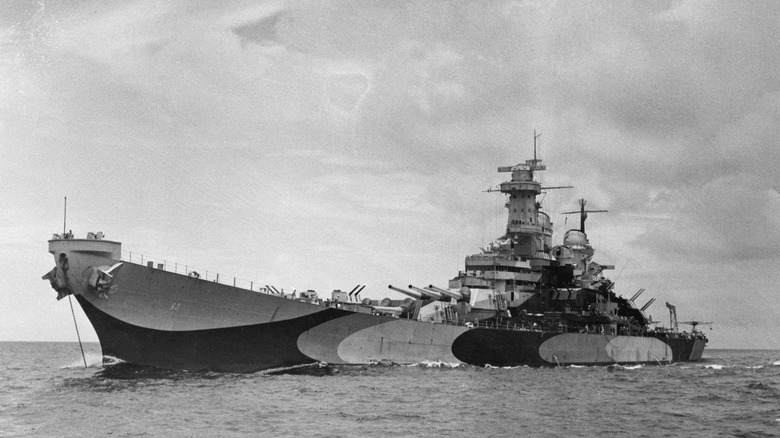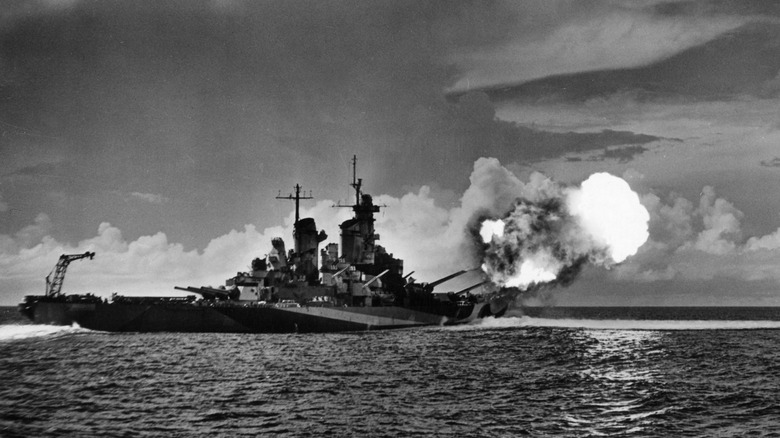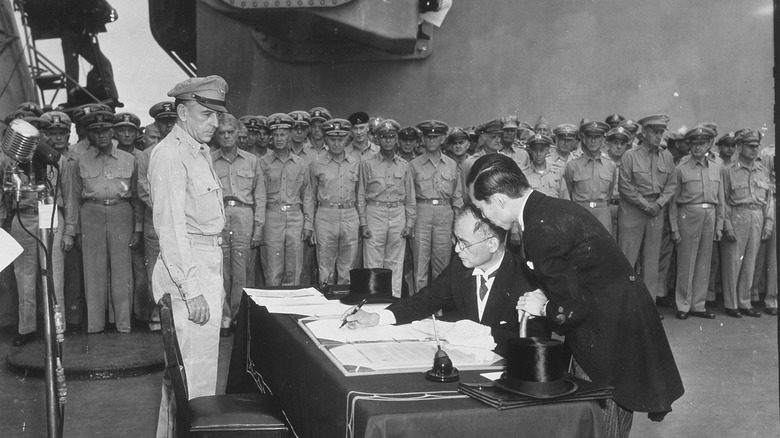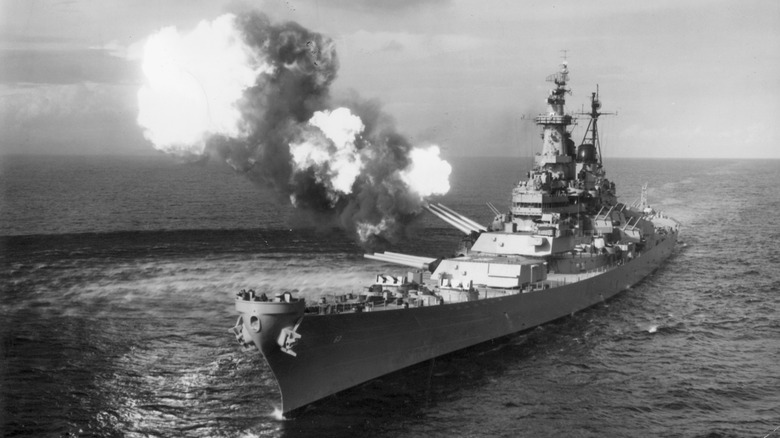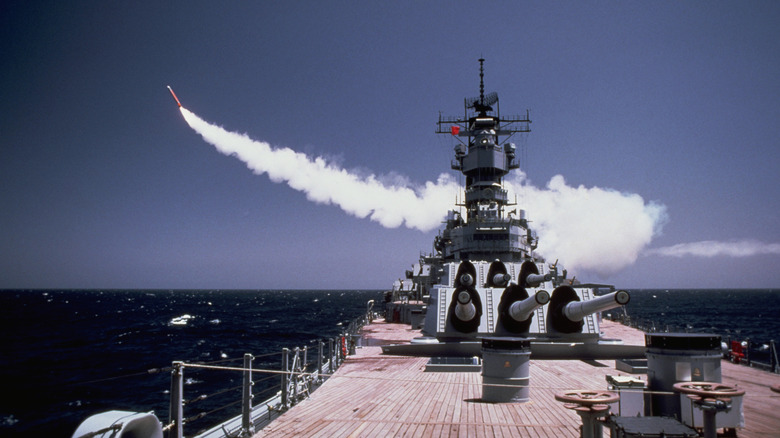USS Missouri: The Story Behind The US Navy's Last Battleship
Battleships are a relic of the past. Several decades ago, when a country wanted to flex its muscles at sea, it would build a ship like the Bismarck or the Yamato. In the age of supersonic (and potentially hypersonic) weapons and air supremacy, a conventional battleship doesn't make a lot of sense. A cruise missile or well-organized airstrike is going to beat a large target sitting in the middle of the ocean (at least most of the time).
However, right as the age of battleships was coming to a close at the end of World War II, the United States launched the USS Missouri, the last battleship to serve the U.S. Navy. It was nicknamed "Mighty Mo" and served from 1944 during the closing attacks on Imperial Japan, through the Korean War, took a break for a few decades, and then sailed right into action to fight in Operation Desert Storm before finally becoming a museum ship in the 1990s.
The Mighty Mo
The Iowa-Class Missouri was a massive ship when it was built in 1944, displacing a total of 45,000 tons (when empty) and stretching 887 feet, 3 inches in length. It was only dwarfed by the historically huge Yamato fielded by the Imperial Japanese Navy. All the Missouri's size was backed up by an array of firepower that would make most other ships and fighting forces think twice. The crown jewels of the Missouri's guns were nine 16-inch guns that had a range of an incredible 23 miles. Additionally, it carried 20 five-inch guns. Smaller armament would be added and removed throughout its very long total service life.
Power was supplied by eight steam boilers going to four turbines that provided a total of 212,000 horsepower to all four propulsion shafts. It had a top speed of 33 knots, or around just under 38 miles per hour, incredibly fast for a ship of its size. The hull was upwards of 17 inches thick on the front of the guns and 13.5 inches all the way around the hull. With a total of 2,534 sailors and officers onboard during World War II, the Missouri was a floating fortress.
The end of the war
World War II was where the Missouri saw most of its fighting career. I was stationed in the Pacific and arrived fairly late in the war, just over a year before it ended. The battleship's first ever naval engagement was protecting aircraft carriers during pivotal air attacks on the Japanese islands in the early days of 1945. Bombarding the island of Okinawa to soften up the Japanese defenses was the Missouri's primary job for upwards of three months. During that time it survived multiple encounters with Japanese aircraft, including a direct hit by a kamikaze fighter. It even waited out a typhoon in the Pacific Ocean.
Perhaps the Missouri's biggest claim to fame was serving as the setting for the eventual surrender of Imperial Japanese forces. On September 2nd on the deck of the ship, Japanese Minister of Foreign Affairs Mamoru Shigemitsu and American General Douglas MacArthur signed the signed the surrender document. The Missouri had thrown thousands of shells at Imperial Japanese targets, yet managed to end the entire war with a few swipes of a pen.
The Korean War
Despite partaking in some of the most intense and climactic fighting in human history, the Missouri wasn't done serving. Not by a long shot. After the war, the Missouri toured several countries and ports for training exercises and diplomatic missions. After an extensive refit and repair, it was sent to fight once again in 1951 where it participating in shelling Korea during the opening salvos of the Korean War.
Throughout the conflict, the Missouri would support American and South Korean forces until the cessation of fighting in 1953. After 11 years of fighting, the Missouri was formally decommissioned on February 26th, 1955. The United States Naval History and Heritage Command notes that even with the ship inactive and sitting in a harbor, it was still a dear symbol of American military might and became a tourist attraction well into the 1980s, attracting more than 3,000,000 visitors during its time in the reserve fleet.
Modern weaponry and retirement
But the Missouri's time of service wasn't done just yet. In the late 1980s, the Missouri was brought into service once again. It was outfitted with more modern weaponry to stand a chance in combat against potential enemies from the Soviet Union. When the Cold War ended, and Russia wasn't an imminent threat, the high-tech accouterments, which now included Tomahawk cruise missiles, were used against Saddam Hussein's forces during Operation Desert Storm in early 1991. The same guns that fired on Okinawa during the closing years of World War II were now being used in a completely new world of warfare. According to the Battleship USS Missouri Memorial, the "Mighty Mo" fired a total of 759 rounds from its massive 16-inch guns and 28 cruise missiles for good measure, even destroying rival Iraqi missile batteries in the process.
Finally, the Missouri was able to rest its guns. In 1992, it was formally decommissioned for what is most likely the last time. It was then commissioned as a museum ship in 1998. Today, you can still visit the USS Missouri right next to the Pearl Harbor Memorial in Hawaii.
